|
V. macrophyllum is a high bush, large-leaved huckleberry. To the
casual visitor this species is confused with fool's huckleberry whose
leaf resembles it closely but whose berries grow in clumps from the
stem. The true huckleberry is single, and much larger. The indians
prized this berry highly for its taste.
|
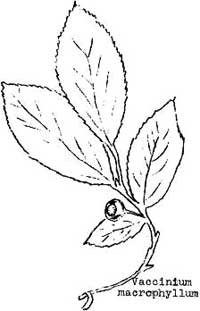
|
|
V. ovatum or the evergreen huckleberry of the low altitudes is a
beautiful low bush whose leaves are a rich green when mature and a
beautiful orange red when first emerging. Florists use, this plant
together with flowers in a wreath or spray and it is considered superior
to others for a green background because the leaves retain their
freshness for so long a time. Commercial picking of this shrub is
carried on in the Grays Harbor region.
|
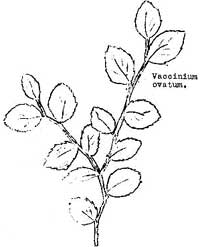
|
|
V. ovalifolium is most colorful when blooming. The flowers come
before the leaves emerge and it gives the entire plant a lacy pink
appearance.
|
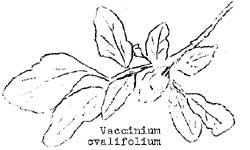
|
|
V. scoparium like parvifolium has red berries but they are small, not
too numerous on the stem and the bush is only hand high. In the park
from 2000 feet to 4000 feet it is found abundantly.
|
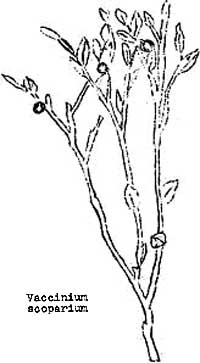
|
|
V. occidentale is hard to locate on the South west side of the
mountain. The better habitat is the east slope of the cascades and south
to California. It can be distinguished from its closest relative, V.
ovalifolium by the smooth-edged leaves and the uniform manner in which
they arise from the branch, also the berries arise sometimes in twos
from the branch.
|
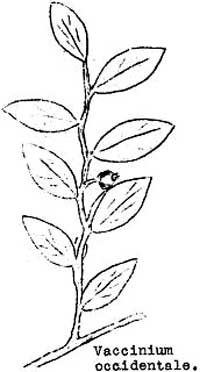
|
|
V. deliciosum is the huckleberry so abundant in Indian Henry's
Hunting ground. The sugar content of this berry is high which makes it
good for canning. This is the one the indians and bears gather in
quantity because the berry is large and low to the ground. The leaf is
edible and the bear strips the leaves, berries and all from the stem,
with his paws and crams them all into his mouth.
|
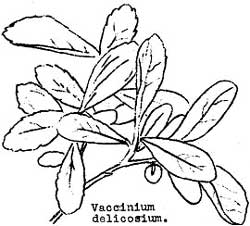
|
|
V. parvifolium is the tall bush huckleberry with the angled
branchlets. Its berries are large, red and acid. They occur abundantly
enough on the stems to make it worth while for picking. Since it is the
most common one of lower altitudes it is no wonder that people who do
not get far from home always remark, "Huckleberries are always red."
|
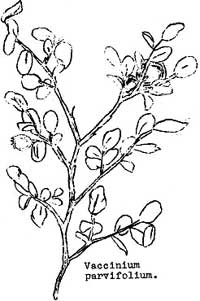
|

